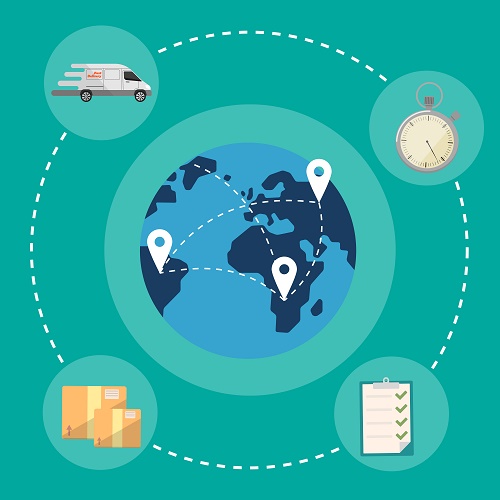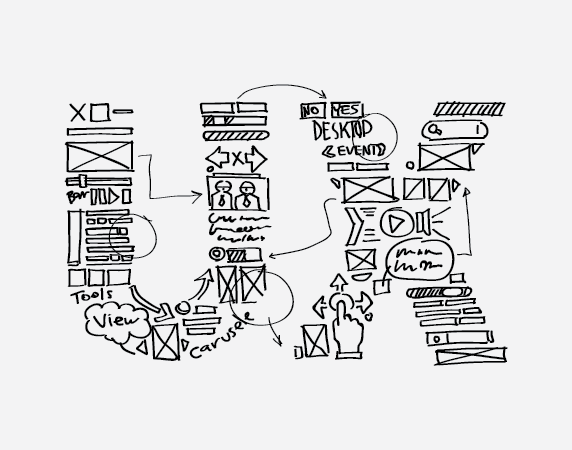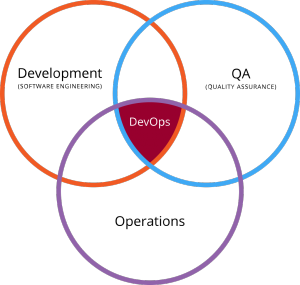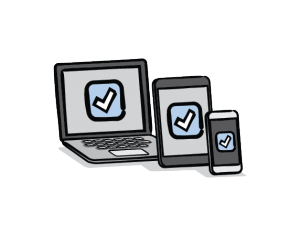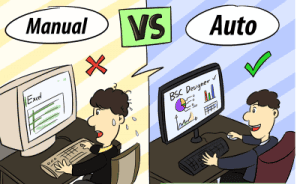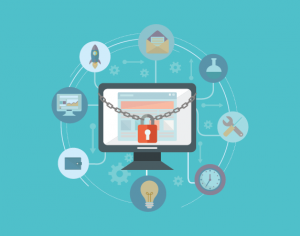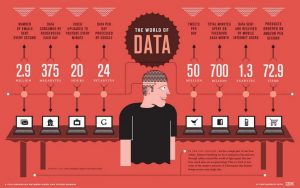Category: Business
Digital technologies have permeated and disrupted almost all sectors, and logistics companies are no exception.
Optimization and efficiency, combined with speed and seizing the moment are the keys to success in today’s highly competitive advantage. Technology is the key enabler allowing companies to realize these aspects.
Leveraging Technology for Strategic Planning
A report by transport and logistics analysts Oliver Wyman reveals transportation and logistics companies increasing revenue, yet having reduced profits, over a 10-year period, and come with the recommendation to “standardize and streamline structures and processes, developing industry oriented and innovative solutions, thinking and acting in terms of networks.” Technology is the key enabler in this regard.
On average, transportation companies invest about 5% of their annual revenues in digital operations, with the main focus on digitizing their customer interface. The thrust these days is especially on mobile apps and solutions, to offer a personalized experience for their customers, and track the movement of vehicles accurately. However, side-by-side companies are also increasingly using digital technology to unlock new business models, focused on the creation of value-added services and innovative solutions.
The Use of Big Data to Improve Operations
The need to cut cost and take real-time action, in a competitive environment where margins are wafer thin, require logistics companies to take greater control over their supply chain and ensure the processes take place seamlessly, at great speed. Towards such ends, logistics companies are increasingly applying Big Data technology, to capture and analyze data, to streamline their operations and optimize the supply chain.
Computers apply algorithms to crunch Big Data, unlocking insights and opportunities not possible before. Such insights enable streamlining operations and optimization of the supply chain.
- Data based automation, especially automated load building and optimizing the inbound and outbound movement of cargo, enable optimal usage of available resources, reduction of waste, and facilitate lean operations.
- Effective real-time fleet management solution facilitates “uberization” of trucks and other delivery vehicles, where empty containers may be utilized immediately by matching it to the nearest load. Mobile solutions enable greater transparency into the operations.
- A comprehensive data based inventory and supply chain management system unlocks silos, and facilitates end-to-end visibility to inventory, orders and shipments across the supply chain. Such transparency allows improved tracking of inventory movement, facilitates the reduction of network-wide inventory levels, and enable managers to respond dynamically and in real-time to any events or issues that disrupt or hinder the supply chain.
- Analytical data makes explicit greenhouse emissions and carbon footprints of truck and machinery operations, allowing companies to take steps to become carbon-neutral, thereby contributing to the cause of “Green logistics.”
- The combination of machine learning with supply chain management enables turning reams of passive data into actionable business intelligence. Logistics companies apply the wealth of data related to the movement of their goods and trucks to identify patterns related to customer trends, identify what works well, unearth market insights, and gain competitive advantage.
Digital Improves Security
Supply chain disruption is the number one global business risk for logistics companies. Technology enables fortifying the supply chain in many ways.
- Digital locks make the inventory more secure, offer a robust layer of security, in addition to physical security.
- Optimal route planning, combined with real-time tracking of cargo movement through mobile apps enable routing of cargo by avoiding congestion points and trouble spots, to minimize risks and interruption.
Internet of Things (IoT) Enhances Operations
The earliest applications of RFID and nascent IoT technology have been in asset tracking and warehouse management. For instance, rather than simply tracking inventory of pallets and crates, enterprises use sensors, beacons, RFID and other technology to gather information on the state of the connected item, such as when the “thing” requires maintenance, the expected life of the “thing,” and more.
IoT contributes to highly integrated warehouse management solutions, enabling precision movement and accurate tracking of movement of goods. The applications of IoT instruments in logistics are virtually endless, ranging from tracking transportation goods in a temperature controlled way to ensuring the correct package reaches the correct location at the specified time and more.
The trends in the immediate future include connected and ‘autonomous’ trucks, warehouse robotics, and smart warehouse solutions, all of which will improve efficiency manifold, speed up operations, and improve accuracy.
Technological Innovations Unlock New Possibilities
Logistics companies use technology not just to improve efficiency of operations, but also transform the way operations take place in itself. The use of robots in large warehouses, and to handle hazardous goods is already widespread, as is the driverless, remote-controlled vehicles.
The next big thing is the use of drones, especially for last mile delivery. The U.S. Government is already piloting a drone-based traffic monitoring system. Countries such as Spain, France, and The Czech Republic and others have several research projects looking into the use of drones for traffic management. The widespread use of drones would speed up things considerably, reduce the hassles, strain and inefficiency associated with maintaining an army of delivery boys, and also reduce costs considerably.
A start has already been made, with Amazon Prime Air already making legit deliveries using drones, in less than 30 minutes from the time customers place an order. When the technology becomes widespread, logistics will change like never before.
Improved Customer Satisfaction
Proactive transportation and logistics companies go beyond improving their operational efficiency and retaining greater control over their operations, to enhance customer satisfaction.
Technology propels a shift to a customer obsessed operating model, enabling the delivery of personalized and customer-focused logistics, with faster cycle times.
Hyper-connectivity facilitates not just big data, but also speed data. Speed and timeliness, manifesting in seizing the moment enable companies to match customer expectations and deliver competitive differentiation over its competitors.
It requires considerable expertise in both business operations and the latest cutting edge technology to roll out successful technological solutions acceptable by the rank and file. By partnering with us, you can piggy-bank on our vast and extensive experience in delivering highly intuitive apps and other solutions for transportation and logistics firms. Our rich talent pool, combined with extensive experience allow us to add value to your strategy, and roll out seamless apps that make your processes highly efficient, allowing you to cut costs, unlock new possibilities, and take customer satisfaction to new levels.
Stay up to date on what's new

Featured Blogs
Stay up to date on
what's new



Talk To Our Experts
As the world increasingly becomes software-centric, more and more enterprises are rolling out enterprise software of all hues. Empirical evidence suggests enterprises using enterprise software performs better financially, compared to enterprises which do not use such software.
However, after the gung-ho about the benefits on offer come the reality-check of costs and return on investment. In today’s highly competitive world, the top management and investors demand accountability for every dollar. The productivity improvements, new possibilities and other benefits notwithstanding, top management invariably insist aligning enterprise software with short-term business interests, and seek to justify it through metrics such as Return on Investment (ROI) and Total Cost of Ownership (TCO). In such a context, budgeting for enterprise software becomes critical.
As a rule of thumb, a standard non-subscription enterprise software ranges anywhere between $10K and $500K, depending on the functionality and feature list. However, drawing up a specific budget, and more importantly, adhering to it can be quite a challenge.Here are the key factors to consider when budgeting for enterprise software.
Software Development Costs
Since enterprise software is mostly custom built for specific tasks, it varies in price drastically. The cost of any particular enterprise software is often a function of the feature and function list. Another key consideration is the technology used. For instance, a proprietary stack would cost more than an open-source stack. Enterprises need to make a trade-off upfront between the range and depth of the software, and the investment they are prepared to make.
For instance, bare-bones email software, with no spam filters would cost considerably less than full-blown software that co-opts spam filters and other advanced options. However, opting for the full-blown version would also entail considerable up-front investment, which may make the whole exercise financially unviable or less attractive for the enterprise. The price differential may also translate into getting much more for less. There is no right or wrong solution, and the enterprise needs to make a trade-off at the planning stage, based on the need, depending on what suits them best.
Enterprises nevertheless would do well to seek the best value-for-money proposition, rather than going for the cheapest option. A case in point is investing more for futuristic and expandable technology stacks, rather than risk low-cost enterprise software that may become obsolete in a year’s time. Often the enterprise takes a risk by subsidizing the initial investment, hoping for ROI in the long run, as the software matures and becomes part of the day-to-day infrastructure.
Many enterprises now adopt Software as a Service (SaaS) solutions, which not only offers anytime, anywhere availability but is also cost-effective compared to on-premises installation.
Licensing Costs
Unless the enterprise is developing the software solution in-house, they would need to purchase the license from the developer.
Annual licenses, common with subscription or software as a service (SaaS) offerings, is a popular and convenient option, where enterprises purchase a per-user license from vendors. Such licenses are generally all-inclusive, including technical support, software maintenance, and hosting.
Consumption licenses offer a “pay-as-you-go” model, which is a variant of the annual license model. Here, the enterprise pays only for the actual use of the software rather than fixed monthly or annual fees.
Perpetual licenses are the opposite of annual license, where the enterprise makes an upfront, one-time payment for the license, and get to own the software for eternity. This is the most common type of license for custom made and self-hosted enterprise software. However, even such licenses may be on a tiered basis, with the amount varying for a number of users. Enterprises would also have to pay annual support and maintenance fee, usually in the range of 10% to 20% of the perpetual license fee. The updates, upgrades, and fixes are part of maintenance, but enterprises would still pay additional for changes to the software, such as changing functionality depending on business requirements.
Hosting Costs
It is not enough to develop the software. The developed software has to be hosted. Nowadays, the trend is hosting in the cloud, which is much more convenient, cost effective, and perfectly suits the needs of mobility. The enterprise generally enters into a Service Level Agreement with the provider, fixing the payment, and securing a guaranteed level of service, in return. As a rule of thumb, cloud vendors generally price about 1/3 of the upfront license cost of on-premises solutions, on an annual basis.
Implementation Costs
After developing and hosting the software, it has to be implemented, meaning it is to be installed, up and running at every place the software is supposed to function. The implementation ratio is the ratio of implementation service cost to the software license, or in other words, the amount required for implementation, for every dollar spent on the software license. Generally, implementation will cost the same as the license, but complex implementations, spread over multiple geographies, can cost more. The cost of implementation would also depend on whether there is a need to buy new systems or terminals to run the software.
Operations Cost
The most underestimated part of the enterprise software budget is the operations costs, such as boarding costs or costs to bring users to the system, training cost, and also the opportunity cost in lost productivity as people forsake their earlier system, and get familiar with the new software. However, the opportunity cost, and for that matter, all cost pays back for itself in a short while, if the software is good enough to boost productivity and unlock new opportunities.
Enterprises not having the latest cutting edge software stand to lose out big time. At the same time, software is not the end in itself, but rather a means to an end, and it is in the organization’s interest to take up the means if the benefits of the means far exceed the investment on it. The solution to the imbroglio is partnering with us for your enterprise software development requirements. Our considerable expertise spanning across several projects, and our rich talent pool allow us to deliver highly powerful solutions in the most cost-effective manner.
Stay up to date on what's new

Featured Blogs
Stay up to date on
what's new



Talk To Our Experts
Mobility is booming. The number of mobile users worldwide touched 4.43 billion in 2015, and the figure is expected to reach 5.07 billion by 2019.
The rise of mobility has corresponded with a surge in demand and acceptance of mobile apps. However, expecting a free ride by conjuring up a namesake app is asking for trouble.
Enterprises have no option these days but to roll out mobile apps for the convenience of their internal users and employees, but success demands such apps be of high quality and have a high degree of user adoption. Here are some tips in the direction.
1. Get the Basics Right
When it comes to mobile apps, the first degree of association is with a responsive design, where the format adjusts automatically, to suit the highly fragmented screen size of mobile devices. However, responsive design is now the basic requirement, as is effective planning on the scope of the app, and creating a prototype.
It requires much more effort that such basics to build a successful mobile app.
2. Never Compromise on the UX
The best apps are well designed, both in terms of visuals and the user experience (UX).
Never underestimate the power of simplicity. A simple, neat and clean interface best suits most mobile devices, with its small form factors. Simplicity is not just in the design, but also in the feature list. Make sure to eliminate any unnecessary feature, and make everything clearly visible. Even subtle changes in design make a big difference in usability.
The best UX design is also relative to the platform. Each platform has a native way of screen layouts, displaying information, and navigation. For instance, iOS tabs have a built-in NavigationController, facilitating multiple levels of navigation inside each tab. Android tabs, on the other hand, are shallow, and have no in-tab navigation. Trying to implement iOS-like functionality in Android, such as in-tab navigation leads to confusion, and is counterintuitive.
3. Focus on a Specific Function
The biggest mistake related to mobile apps is considering the app as a micro version of the website. The most successful apps cater to a specific function or niche. It solves a specific problem or does a limited number of things, but enables doing it well. For instance, a field service app makes the life of a field service technician easier, by allowing her to download the relevant inspection forms, access information related to the plant she is visiting, and connect with external help for real-time troubleshooting. Saddling the app with unnecessary features such as customer care, sales reports and more would only serve to make the app bloated, harder to use, and counter-intuitive.
At the same time, make sure every single enterprise app is part of a wider mobile strategy, and as an opportunity to engage with customers, be it external customers or internal customers, in a better way. Spend time on the purpose of the app, making sure it serves a specific purpose that is needed in the first place. Also, make sure each app is a vital spoke, and all apps added together to complete the comprehensive whole in organizational functionality.
4. Leverage the Features of the Mobile
Unlike websites, a mobile app has the capability to push information to users, leveraging geolocation services to offer improved services, adjust to slow data speeds and overall offer a dynamic and proactive experience for users. Such options unlock new possibilities and go a long way in ensuring the success of the mobile app. Effective Planning is critical in adding such rich functionality to make apps more useful.
5. Get the Development Right
Many a time, apps are rushed into the market, without adequate testing, since the app would be needed desperately. An imperfect or half-baked app is more likely to do more harm than good, by impeding productivity. Follow agile development procedures to develop the app well first time round.
Make sure to test often. Discovering the font positions are off, or the app simply crashing on loading, after spending weeks on development, is a recipe for disaster. Very often the solution at such an advanced stage of development would be ineffective quick-fixes which will lead to the failure of the app. Frequent testing enables identifying the problem and affecting a fix immediately before discovery or fix becomes too difficult.
The coder, the tester, and all other stakeholders connected with the app development process would do well to consider themselves as end users, and see how the apps pan out when using it. It is also a good idea to involve the actual end user in the development process.
6. Enable Platform-Agnostic Development
Android is now the dominant platform with over 50% market share in most markets. The iPhone is popular for enterprise users as well. BYOD, which is prevalent in many enterprises make the mobile screen hopelessly fragmented though, with varying screen size and OS variants. In such a state of affairs, trying to optimize for specific platforms is asking for trouble.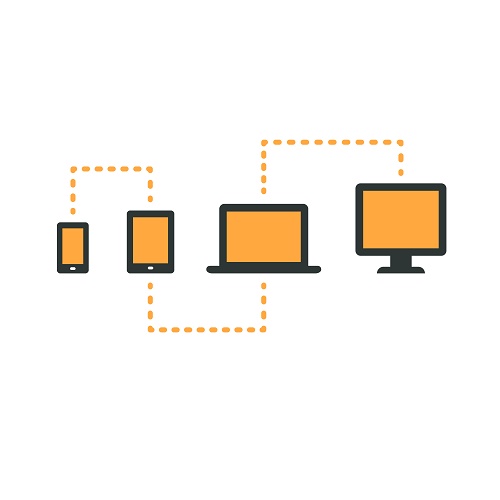
7. Track the App Effectively
An app development project is not one-off but a continuous process of evolution. Use tools to track whatever is happening inside the apps, such as what users click and use, traffic sources, and other parameters, to fine tune the app during the next release. Use the first batch of users to test metrics and understand the real value of each user, before continuing with more systematic campaigns.
The mobile space is highly fragmented, and it requires a high degree of expertise to roll out successful apps. A successful app invariably involves a great deal of experimentation and trial-and-error. Partnering with us would allow you to gain from our experience and expertise in developing hundreds of highly successful enterprise apps, cutting across industries. We have done the hard grind, understanding what works and what does not work. When you partner with us, you get things done easily without having to go through the painful trial and error yourself.
Stay up to date on what's new

Featured Blogs
Stay up to date on
what's new



Talk To Our Experts
Here are the ten emerging and strategic business and technology trends that will shape the way individuals and businesses will derive value from technology in 2017. Vice president and Gartner Fellow, David Cearley, mentioned 3 themes, viz., intelligent, digital, and mesh that will be the disruptive technology forces for the coming years.
Stay up to date on what's new

Featured Blogs
Stay up to date on
what's new



Talk To Our Experts
Mobiles have become all pervasive. Today’s customers and enterprise users alike prefer these devices as the medium of choice. Businesses are increasingly realizing the need to deliver mobile apps and solutions to power their business. However, certain mobile app myths inhibit businesses from leveraging the full potential of mobility to drive growth.
Myth 1: Developing enterprise apps is a long drawn out process
Conventional methods of development are indeed time-consuming. As a rule of thumb, it would take about six months before a new app hits the app store. Multiply the figure by the number of apps required for the business, and an app strategy becomes a non-starter even before it is conceptualized.
However, newer and innovative methods facilitate rapid development and deployment, dispelling the common app development myth of long drawn out process. In fact, using ready-made solutions that require no coding, it is even possible to roll out highly intuitive apps within a few hours or even less! Code-reuse, backend services that speed up integration and other developments also contribute to accelerated development.
The latest cross-platform development approach further reduces development time. Forrester estimates app developers using as much as ten different coding languages, such as JavaScript, HTML5, Objective C, C#, Node.js and more, making the task a complex and resource-intensive one. Newer app platforms, with a “bring your own toolkit” approach allow the use of any coding languages as the developer fancies, reducing the learning curve greatly. Platforms such as Xamarin greatly speed up development by requiring coding of key parts of the application just once and reusing the code across different platforms.
Ready to use cloud-based solutions, for hosting, testing, and other key functions make life still easier for the developer.
Myth 2. Mobile App Development is a One-off Project
One of the biggest app development myth is the development process being a one-off project. Launching an app is akin to starting a business. There is no end in sight, and one can never let their guard down. Just like cutting the ribbon is just the beginning, rolling out the app for users is just the start. Apps need to grow in response to changes in business requirements and changes in technology. If nothing else, the invariable bugs that crop out need to be addressed. A stagnant app will soon become obsolete.
A good approach to adopt is the minimum viable product (MVP) concept, by developing the core functionality, and adopting an iterative product development approach. It offers unbridled flexibility and makes it easier to make changes, as required.
Myth 3: More the function, better the app
A common mobile app myth is considering an app as a miniature version of the enterprise website, and packing in features into it, when the very concept of an app is to offer a specific and focused functionality to a targeted set of users. Apps trying to kill many birds with one stone are almost to a rule slow, difficult to control, bloated, and memory hogs.
High-quality graphics help, but enterprise users seek functionality and ease of getting their job done, over bells and whistles. A clearly defined success, usability (UX), simplicity and above all a clearly defined purpose are the crucial ingredients of success.
A related myth is business apps being data heavy, placing high loads on the device and backend systems. However, the reality is different. An average 4G smartphone is expected to use 5,114 MB per month in cellular data by 2017. The best mobile platforms take large amounts of data from the backend but transmit only a fraction of it to the handset, after filtering it as required. Intuitive developers limit the size of data transfer per app, to say 1 MB or less.
Myth 4: Mobile Applications Come Cheap
For some reason, many people equate mobile solutions with low costs and grossly underestimate the budget for delivering mobility solutions. While simple apps may be developed on the fly with minimal investment, development of highly functional apps requires a lot of effort. A simple UX and powerful features require a complicated backend. As a rule of thumb, more advanced the feature list, higher the cost.
Preparation of the concept, design of the architecture solution, the user interface design and graphics, testing, distribution of the app, user support, and training for end users, all require a sizable investment, more so for using the latest technologies that facilitate accelerated development.
Myth 5: Mobile Applications = Smartphones
Perhaps the biggest myth associated with mobile apps is equating apps with smartphones. While smartphone users are indeed the highest consumers of mobile apps, enterprise apps are equally useful for a host of other devices, including the quintessential tablets, handheld consoles, smart watches, smart glasses, sensor powered things, cars, appliances, and other post-modern devices, suiting a host of business purposes.
In all, mobile apps will be downloaded an estimated more than 248 billion times, and generate a revenue of more than $77 billion, by 2017.
Myth 6: Data Related Myths
Many enterprises, especially those having made large investments in enterprise resource planning (ERP) and other systems are hesitant to develop mobile apps that cannot plug in seamlessly into these existing technologies. Backend systems and APIs such as Sharepoint, MySQL, Oracle, and SAP may not necessarily be accessible through mobile. However, the emergence of enterprise-grade MBaaS (mobile backend as a service) solution with an API infrastructure solves most of these issues and enables mobiles devices to easily access legacy systems.
Myth 7. Mobile App Development Is About Writing Code
Developing a successful mobile app requires much more that coding. Knowledge of Android and iOS technologies is the basic requirement. The comprehensive application design, starting with the initial idea, and covering functionality design, user interface design, graphics requires good expertise, and preferably experience. There is also a need to keep abreast with the latest technology, react to new trends in double-quick time, adapt to latest hardware, and also cater to newer devices such as smart watches.
Each use case varies, resulting in the need for different development languages and toolkits, and requiring connectivity solution for different backend systems and data sources. In the mobile space, support across multiple versions of device operating systems also becomes critical. Cloud-based mobile application platforms make the developer’s life easy, though.
The average development project involves an average of 20 different stakeholders, such as business managers, project managers, developers, in-house IT representatives, employee or end user stakeholders, top management representative, and others. It requires a high level of collaboration to bring these stakeholders together, and ensure the development process takes place seamlessly.
Mobility is much more than developing apps. It requires a wider mobility strategy, and a concentrated effort to deliver cutting edge mobility solution. With our extensive experience cutting over several industries, and a rich talent pool, we are best poised to partner with you in rolling out high-quality mobile apps to further your business, leveraging the full potential of the mobile devices, while at the same time keeping expectations real, separating myth from reality.
Stay up to date on what's new

Featured Blogs
Stay up to date on
what's new



Talk To Our Experts
The only constant thing in today’s world is change. Enterprise software is likewise going through a major churn, to reflect changes in the wider ecosystem.
Until not too long ago, enterprise software development took a rigid and predictable model of requisitioning-requirements gathering-code writing-testing-delivery. The end product, which often took months or even years to develop, was delivered through desktops and laptops. Many enterprises, risk-averse as they are, stuck on to such time-tested formulas. However, the times they are a-changing and enterprises soon began to find out the hard way that who do not change inevitably find themselves “drenched to the bone,” if they aren’t already.
1. Enterprise Software is Becoming Lean, Mean, and Fast
Competitive pressures force today’s businesses to become lean and mean. The fast-paced business environment also raises the need for speed. Businesses are now hard-pressed to take decisions, to take advantage of an opportunity during the short window while it lasts. Likewise, businesses have no option but to be flexible and agile, to seize opportunities in the way it comes, and to please highly demanding customers. Unless the enterprise software, on which business processes and workflows run, are itself is not agile and seamless, businesses cannot position itself to be agile.
Today’s enterprise software seeks to leverage the power of simplicity. However, the need to deliver a simple front end, while ensuring the software is power-packed, often results in a complex backend. The wide range of emerging technologies both in the development and delivery process facilitates the reconciliation. A case in point is the emerging Docker technology that enables developers to create code that can run in their own containers, making the apps nimble.
Today’s enterprise software users are also far less tolerant of bugs and inefficiencies in software applications, and expect developers to implement fixes, and roll out updates rapidly.
2. Functional Programming is Gaining Centrestage
The high velocity of change forces IT leaders to innovate. One innovation that has caught on and now become the norm is functional programming. Many enterprises now build several small software components using functional components, and then architecture systems out of many such small software components
With the focus on speed and ease, enterprise apps are now becoming highly focused, including only what is really required, doing away with the frivolous. Instead of a single bloated one-size-fits-all enterprise app or software, enterprises are developing specific apps for specific functions. Tying the different front end apps together is a cloud-based backend and database, to which the apps sync seamlessly.
There is a new approach to the nature and structure of coding enterprise software as well. Developers are also abandoning the lengthy process of collecting specs and rather going ahead with a project through a new Minimum Viable Product (MVP) approach. The MVP may be regarded as a “lite” version of a feature concept, requiring just a fraction of the time that it takes to build the full feature. After releasing the MVP product and gathering feedback, developers upgrade it to a full blown version.
Time tested procedural programming languages such as C and Java still retain their dominance, but new functional programming languages such as Scala, Erlang and Clojure,noted for the power, are fast gaining ground.
3. The Rise of Collaboration
Enterprise software is increasingly becoming business driven by business users, rather than tech-heavy. While hitherto businesses adjusted their processes according to what the tech team dished out, today business managers are key stakeholders in the development process.
A trend fast gaining ground is DevOps, a spin-off from the time-tested agile and lean methods of software delivery. DevOps basically entails bringing together a cross-disciplinary community, who build and evolve highly flexible and resilient systems. The different stakeholders associated with enterprise software, including coders, operations engineers, managers, and others come together and involve in all stages of application development, right from design to testing.
4. Enterprise Software is Becoming Analytic Heavy
Today’s businesses are increasingly becoming data driven, and facilitating the trend is big developments in deep learning and analytical capabilities.
Most enterprise software today come with built-in analytic capabilities that allow users to scour available data and generate customized reports, on-the-fly. Technologies such as Apache Spark enable businesses to develop machine learning capabilities more easily than before.
However, the successful application of analytics to crunch data requires contextual analytics. In other words, enterprise software developers need to ensure the application of analytics to data is based on a deep contextual understanding of what is relevant. Human judgment may work in some ad-hoc cases, but has its limitations, and in any case, impedes seamless operations. There is no workaround to develop a working contextual awareness model for data analytics.
5. The Cloud, Mobility, and Security
The two big changes in recent times, the cloud and mobility have its impact on enterprise software as well. While some enterprises still run enterprise software applications on in-house servers, more and more enterprises are migrating to the cloud, and opting for the SaaS model. SaaS ensures greater flexibility, anytime, anywhere availability, and lesser total cost of operations (TCO.) SaaS also facilitates mobility, or delivery of enterprise apps through mobile apps, which is now indispensable considering the prevalence of a highly mobile workforce and the need to remain connected at all times.
However, the cloud, the mobility, and the Bring your own device (BYOD) programs raise the stakes of security. Enterprise software developers are smartly but slowly realizing the need to develop robust code and plug vulnerabilities that prevent debilitating attacks from malicious intruders, both internal and external, out to steal confidential data, intellectual property, and trade secrets.
Enterprise software development is now evolving into a continuous process, a distinct shift from a one-off project approach. In this constant battle to stay relevant and stay secure, your in-house IT teams, who has more pressing priorities, is sure to be swamped. Partner with us if you want to leverage the skill sets of our highly talented and resourceful team of developers, backed up by our experience in delivering hundreds of powerful and customized enterprise apps.
Stay up to date on what's new

Featured Blogs
Stay up to date on
what's new



Talk To Our Experts
Enterprise mobility has come a long way in improving organizational efficiency and helping companies empower their workforce digitally. It has been estimated that by 2020 the global revenue generated by enterprise mobility software market would surpass $140 billion annually. With a compound annual growth rate of 15%, it is also expected to be spearheading nearly 15 to 20 percent of annual IT spending by global organizations. The driving forces behind the growing market for enterprise mobility products are the increased productivity factor for mobile workforce and the availability of low-cost smart devices. 2016 is running to a close and so we decided to have a glance of what’s going to be the state of Enterprise Mobility in 2017.
Let us see the direction in which enterprise mobility will head into in 2017:
Market Focus
As usual, 2017 has a very robust growth outlook in existing markets especially North America, which will be the primary leader globally in terms of enterprise mobility adoption. However there will be a new name on the top of the list for fastest growing markets – Asia Pacific (APAC). With a Compound Annual Growth Rate (CAGR) of 21 percent, APAC markets are expected to be an area of huge focus for enterprise mobility product vendors.
Flexible Device Management
Very recently, Forrester claimed that mobility is of prime importance for 71% of organizations. This means they will promote almost all kinds of mobile devices amongst its workforce. Bring Your Own Device or BYOD as it is affectionately known globally, will create room for newer policies in device management and control. Integrating flexibility into the BYOD ecosystem will be a challenge as good majority of employees would utilize the same device for personal and office use.
Information on the Go
Taking a leaf out of the previous trend, the rapid rise in number of devices will pose another challenge for information access. Enterprise data or information would be scattered across multiple organizational departments, hierarchies, geographical locations, etc. But for the end user or mobile workforce, all they need is information on the go, at their fingertips. Cross channel and intra-organizational data communication policies would face increasing pressure to synchronize information across mediums so that more informed decisions can be taken by end users.
Cloud Synchronization
It is hard to call Cloud a buzzword now not because it is irrelevant but because it is a norm for the entire tech world. From music to high end
Security
Perhaps for the last few years, when people speak about trends in tech, especially when it involved data communication across channels, security had been the number one point on the list. Today we pick security to occupy a lower position, not because it has become a guaranteed surety, but because of the huge improvements that have been witnessed in the world of data security. Thanks to cloud computing, it is easier for enterprises to have a focused area to spend on information security. Whether companies opt for established cloud service providers like, Amazon Web Services or Microsoft Azure, or whether they build their own private cloud infrastructure is not a relevant question in today’s cloud security context. Cyber-attacks are increasingly being reported globally and hence it is imperative for organizations to lay strict emphasis on security policies. The most challenging security scenario in the case of enterprise mobility would be the unmonitored usage of device on insecure public networks. Security applications would definitely find huge market scope in the coming years.
Internet of Things (IoT)
IoT today is what cloud computing was 5 years ago – the rising area of focus for businesses. The ability of devices, or more specifically sensors, to communicate user dat
Dedicated Mobile App Development Centers of Excellence
This is a culmination of all the above trends. With such a huge emphasis being directed towards enterprise mobility, organizations would require dedicated developer teams to build customizable solutions for enterprise mobility. These developers would be groomed as an agile workforce to support the massive amount of organizational activities being migrated to enterprise apps.
So there you have it folks, 7 trends we feel will shape the future of enterprise mobility in 2017 and beyond. Enterprise mobility is here to stay and is definitely moving in the direction of becoming a hotbed for tech innovations in the near future.
Stay up to date on what's new

Featured Blogs
Stay up to date on
what's new



Talk To Our Experts
Inspections are an inevitable part of life in enterprises for quality checks and compliance purposes. Such inspections, though unavoidable divert resources and distract focus from the core business activity, as such, is seen as a drag on resources.
However, a smooth and streamlined inspection workflow, integrated to core business processes can minimize the disruption and actually leverage the inspection process for the benefit of the enterprise.
Here are five ways to streamline inspection workflows for the New Year
1. Have Clarity of Purpose
Have clarity of purpose, and understand the exact deliverable required out of the inspection workflow. For instance, if the inspection is carried out as part of legal compliance, make sure the workflow captures all the required information necessary to populate the reports, and the process flow complies with the requirements of the regulations. If the objective is adherence to quality standards, keep the end in mind, and plan on how the workflow will track the required statistics.
Big is not always beautiful. Resist the temptation to introduce wholesale or big changes, just for the sake of it. More often than not, small incremental tweaks made at the right place can deliver huge improvements.
2. Treat Documentation Seriously
Strange as it sounds, at times even the best-oiled enterprise may overlook the obvious. Documenting or defining processes is one such instance of the often overlooked obvious. Documenting the inspection workflow lends clarity and order to the process. It also makes explicit complex, convoluted, or roundabout processes that can be eliminated or bypassed.
While there is a need to make the documentation as exhaustive or thorough as possible, to capture all processes, there is also a need to keep it simple. Infusing the documentation with illustration and flow charts serves the purpose, and makes it doubly easy to identify complexities, and make amends.
Break down the process into discrete steps, with more granular the process the better. Also, rank each process in order of importance, giving priority to streamlining processes that actually matter, or are the most critical. Many processes are interdependent, and as such streamlining such processes may be best effected together with such interconnected process, for greater effectiveness.
3. Value Progress over Perfection
Many managers fall into the trap of perfection. No workflow is perfect, and even the best-laid plans falter in the face of practical exigencies. Aim for progress, or getting the work done in the fastest possible time, with minimal effort and resource, rather than artistic perfection. The caveat is to ensure no process mandated by regulatory or compliance requirement are skipped or bypassed in the quest for speed or efficiency.
In any case, contemporary business is extremely fluid, where workflows need to change rapidly, to cater to the evolving requirements. Trying to cope with the requirements of an ever-changing infrastructure with stagnant workflows and technologies would be like trying to compete in a drag race with a jalopy.
For greater effectiveness and accurate results, match the changes in business processes, brought about by technology, with changes in workflow inspection methodologies. A case in point: IoT may enable turning lighting systems on and off automatically, depending on the time of the day, sensors detecting movement of people, and other considerations, An inspection schedule that offers a checklist involving switching on and off the light at set times becomes counterproductive and disruptive.
4. Invest in Collaborative Workflows
The world is increasingly becoming collaborative. No initiative to streamline processes works without involving the key stakeholders in the mix. With regards to inspection workflows, the field staff, or employees who actually conduct the inspection would know better than anyone else how to improve the process, how to enhance it, and how to remove roadblocks. Such stakeholders may have suggestions for even trying something radically new to achieve the same thing.
Make the process collaborative, and involve the field staff to buy their support for the initiative. Failure to do so will invariably result in a disconnect, with the manager sitting in the cabin, looking at flowcharts and powerpoint presentations, deciding on what would make the process efficient, when the actual situation on the ground may be completely different.
5. Automate the Process
Many businesses, in fact about 70% to 80% of them, still use spreadsheets to manage their workflows. Spreadsheets offer convenience, but are error-prone, require lots of manual work, and can create serious versioning clashes. It makes sense to invest in modern field inspection software that automates the process, to improve accuracy, reduce manual entries, and speed up the process. Such inspection suites capture key information automatically, leveraging the camera, bar-code scanner and other features available in the smartphone, populate fields seeking duplicate or derived information automatically, auto generate reports, and issue automated alerts as required. Intuitive workflow inspection software makes it easy to change workflows as required by simple drag-and-drop mouse clicks, to meet the exigencies of the situation, or to reflect the changing needs of the business.
Inspections are not easy. A mobile inspection app that eliminates paperwork, streamlines the workflows, and makes the process transparent goes a long way in reducing the drag, and ensure the inspection meet its realized objectives.
Stay up to date on what's new

Featured Blogs
Stay up to date on
what's new



Talk To Our Experts
Mobility is the in-thing now. The BYOD wave, coupled with a highly mobile workforce means most employees now access the enterprise network through their mobile devices. However, mobility poses security risks as well. Lurking cyber criminals can easily exploit a vulnerability or security loopholes in a mobile device to gain entry to the network, and wreak havoc. CIOs understand most employees regard mobile devices as the most critical tools for getting work done, but 83% of them are still reluctant to embrace the trend, owing to security concerns.
The following are some enterprise mobile security best practices to prevent such security nightmares from coming to pass.
Get the Approach Right
The basic aim of enterprise mobility security is similar to conventional network security, which is to limit exposure to unwanted or uninvited access, and to implement “in depth defense” to harden the system against attacks. Most security systems have multiple layers of protection in place, so that the system remains safe until help arrives, even if one or the first few layers are breached. However, beyond this basic approach, the needs of enterprise mobility security are markedly different.
Securing mobile devices requires a new approach, radically different from protecting conventional endpoints. Mobile devices are moving targets in use outside the organization’s perimeter, and as such traditional security layers such as the firewalls, spam and content filtering, and many other tools are ineffective.
Mobile operating systems such as Android and iOS are especially susceptible to malware attacks, in the same way Windows and Linux are vulnerable. Anti-malware software, updated on a regular basis, is the basic security tool for mobile devices. Any sound enterprise mobility security policy would recommend a sound anti-malware suite, with policies for keeping it updated.
Likewise, encryption is the name of the game for keeping corporate data and intellectual property safe in the Wild West that is cyberspace. Wireless communication is easy to intercept and snoop, making a strong case for encrypting all sensitive communication going in and out of mobile devices. There is also a good case for using VPNs that include encryption and strong authentication capabilities, to access cloud based systems or other remote services from mobile devices.
Remote wipe and lock, and ability to track the location of the mobile devices are also basic security features for enterprise mobility.
Have Strong Authentication in Place
Mobile devices are especially vulnerable to theft. Eight out of ten CIO’s believe smartphones increase organizational vulnerability through interception of data in transit or through device theft.
Any enterprise security best practice requires strong authentication mechanisms that go beyond conventional passwords.
Built-in biometrics, leveraging the smartphone’s facial recognition capabilities, fingerprint scanners, and voiceprint recognition offer a high level of security. Opt for multi-layered authentication, with add-on device passwords, so that the system does not give automatic access to sensitive information through any endpoint device.
Hypersensitive companies could program to wipe off data from the smartphone automatically, on encountering repeated failed login attempts.
Control Third-party Software
Third party software, which may come with latent vulnerabilities, such as black gateways, built-in back doors and drive-by download of rogue software, are loose ends in enterprise mobile security. In a perfect world, the enterprise could eliminate third-party software in favor on in-house enterprise mobility apps, but such an approach is a non-starter for most enterprises, owing to practical considerations and limitation of resources to develop custom apps. The next best thing for enterprises is to lay down policies that regulate the use of third-party apps. The policy could also white-list safe apps, or black-list apps dangerous for the network.
Many enterprises are now toying with developing their internal app stores that vets apps suitable for download by enterprise users.
Have Effective Control over the Network
There is no shortcut to having an effective control over the network. In the BYOD era, it is essential to have an up-to-date inventory of all devices authorized to access the network, and nip access of unauthorized devices in the bud.
Creating secured mobile gateways also enhances security in a big way. Securing the network is a team effort. The IT manager and the business manager needs to work together to list down the use-cases, systems and applications mobile users really need to access. Mobile traffic could then be directed through special gateways, complete with customized firewalls, content filtering, and other security controls enabled.
Another best practice is to make BYOD users log on to a remote virtual work environment, through VPN. In such sessions, only the screen output from work applications and systems transmits to the mobile device, and the data does not persist once the remote session ends.
It is also a good idea to conduct penetration testing on the network on a periodic basis, to identify and fix any loose ends.
Have Effective Control over the Device
The configuration of mobile devices is just as important as the choice of mobile devices. Best security practices dictate hiding Bluetooth from discovery, or disabling it altogether, and configuring the device to avoid unsecured wireless networks. A management client application, downloaded on the BYOD device, enable users to comply with such regulations.
Mobile hyper-visors and containers, especially useful for BYOD devices, enable enterprise system administrators to manage apps, data, policies and settings within a container on the employee’s personal device without such interventions intruding into personal content.
While there is a strong case for security, going overboard with security can impede usability. The trick is to strike a fine balance between effective security that is non-disruptive, and UX. It requires considerable experience and expertise to strike such a fine balance, and we have such expertise. Get in touch with us today, to leverage our talented team, who have several years of experience in securing even the most complex and diverse of all enterprise mobility networks.
Stay up to date on what's new

Featured Blogs
Stay up to date on
what's new



Talk To Our Experts
The world of business and technology is ever on the move. Businesses that do not change with the time invariably face obsolescence. Here are the top five developments small businesses can expect to impact their business, in future.
The World Will Increasingly Go Mobile

More are more customers now prefer mobile apps for browsing products conveniently on the move, quick and easy checkout, and other benefits. For the business, mobile apps offer loyalty, as customers who download an app are less likely to go elsewhere. It also allows a convenient way to reach out to customers. About 50% of small businesses will have a mobile app in coming years, and as much as 70% of their online traffic will be through this medium. Through mobile apps, 55% of the small businesses aim to increase sales, 50% of them aim to improve their customer service, and 50% of them aim to become more competitive in their niche. Even sectors where mobile apps have traditionally not found a strong footing, such as restaurants, event organizers, churches and funeral services, and others, is expected to roll out mobile apps in a big way.
E-commerce Will Get More Innovative

Newer, fully integrated and easy-to-use payment options will take center stage. Options such as Google Pay, Apple Pay, Samsung Pay and even PayPal checkout options will become common.
There will be greater integration between online and offline, with customers using apps while shopping in brick and mortar stores to make comparisons, or conversely, online customers picking up orders from physical stores. About 11% of US consumers prefer using their smartphones to make in-store purchases.
With too many e-tailers all vying for the same market, the thrust will be on innovation as the means to stand out and gain competitive advantage.
Big Data will Enter Small Business Space in a Big Way
Hitherto, the costs and efforts associated with big data meant only big businesses could leverage it for their benefit. But the times are changing. The big data will become “democratic” enough, with new solutions enabling even small and medium businesses to embrace the technology in a big way.
Small businesses would increasingly rely on the mountain of customer and historic sales data available at their disposal, before taking marketing and other decisions. 82% of marketers already opine big data as vital to their campaigns. More and more small businesses would leverage big data to personalize product offerings, explore untapped offerings, and engage with customers in a personalized way, and thereby gain competitive advantage.
The big thrust will be on the infrastructure required to collect, analysis, and formulate the required insights.
The Cloud and IoT will Drive Backend Operations

2024 is also the year when the Internet of Things (IoT) will permeate into everyday lives, and change how business is run. Small businesses will be able to leverage IoT to improve connectivity among their workforce. For instance, a smart app that integrates a wearable camera could improve connectivity among geographically dispersed employees, and also improve accountability. Connected devices could report low inventory and reorder automatically, reducing costs. The possibilities are endless.
New Paradigms will replace the Old in Marketing
Digital marketing is going through a churn. Banner ad click-through rates continue to decline, and organic reach for businesses via social media is now almost non-existent. About 49% of consumers now employ some type of ad blocking. In such a scenario, businesses are exploring newer ways to reach out to their target market.
One method likely to go centre stage in future is permissions marketing. Here, consumers give marketer the privilege, rather than the right to offer highly personal and relevant content. Needless to say, only high-quality content and authoritative content will make the cut.
Another method likely to gain big ground is influencer marketing. Word of mouth is already the driving force behind many purchases. Influencer marketing is the next stage. Influencers are persons of authority in their network. Small businesses will look to curate employees as influencers within their circle, or invest in developing external influencers.
What other trends do you foresee for small businesses? Drop in a comment.
Stay up to date on what's new

Featured Blogs
Stay up to date on
what's new




